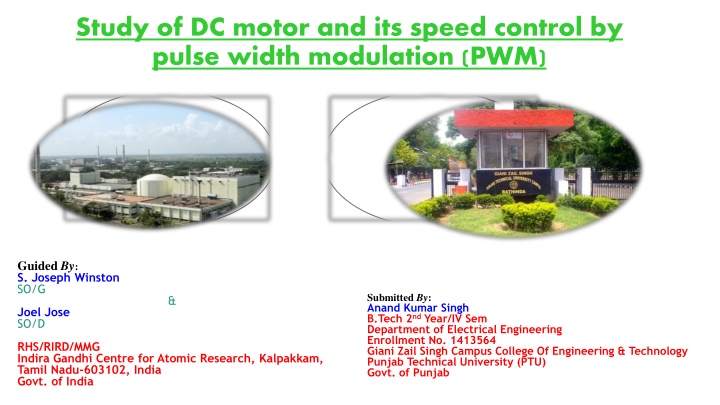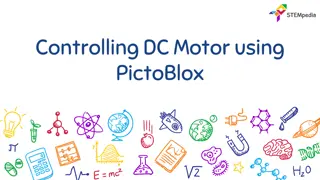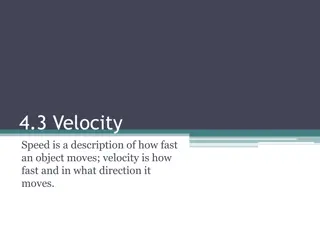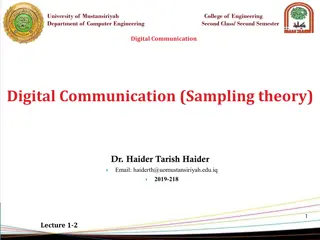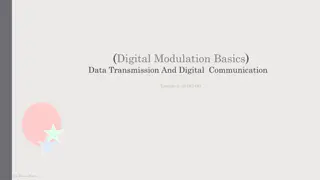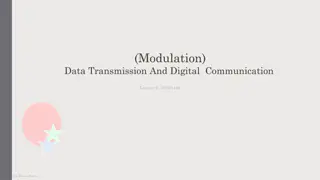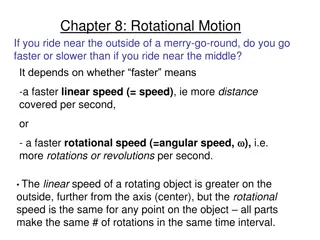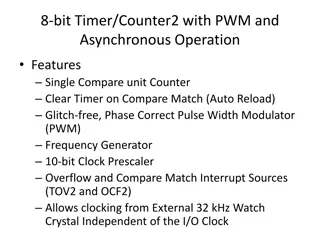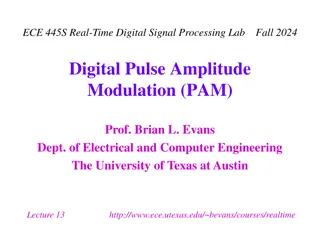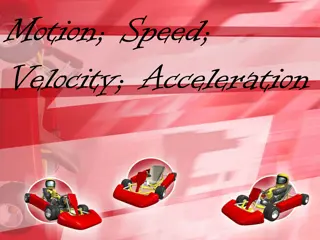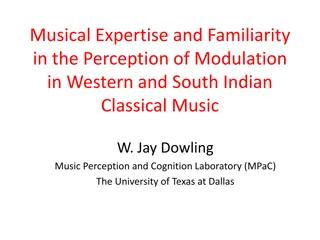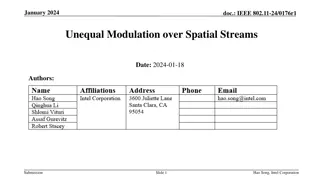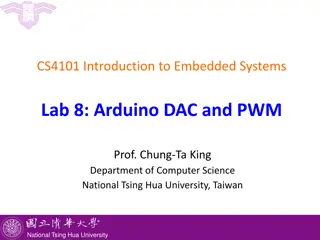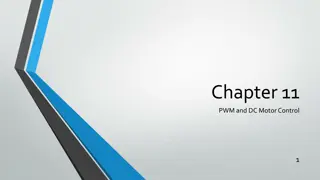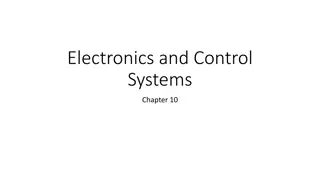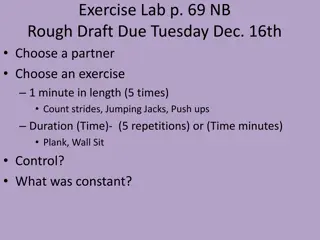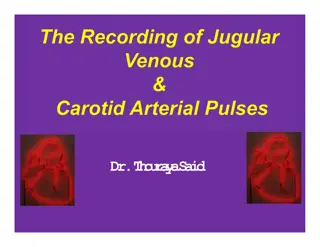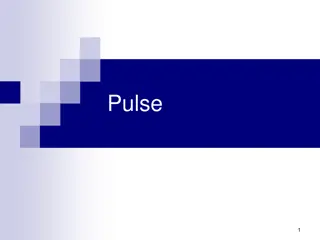Study of DC motor and its speed control by pulse width modulation (PWM)
A detailed study on the operation and speed regulation of DC motors using Pulse Width Modulation (PWM) technique. Covers the operating principle, equivalent circuit diagram, and graphical analysis of DC motors. Explores the significance of speed control and the application of PWM for efficient motor operation.
Download Presentation

Please find below an Image/Link to download the presentation.
The content on the website is provided AS IS for your information and personal use only. It may not be sold, licensed, or shared on other websites without obtaining consent from the author.If you encounter any issues during the download, it is possible that the publisher has removed the file from their server.
You are allowed to download the files provided on this website for personal or commercial use, subject to the condition that they are used lawfully. All files are the property of their respective owners.
The content on the website is provided AS IS for your information and personal use only. It may not be sold, licensed, or shared on other websites without obtaining consent from the author.
E N D
Presentation Transcript
Study of DC motor and its speed control by pulse width modulation (PWM) GuidedBy: S. Joseph Winston SO/G Submitted By: Anand Kumar Singh B.Tech 2nd Year/IV Sem Department of Electrical Engineering Enrollment No. 1413564 Giani Zail Singh Campus College Of Engineering & Technology Punjab Technical University (PTU) Govt. of Punjab & Joel Jose SO/D RHS/RIRD/MMG Indira Gandhi Centre for Atomic Research, Kalpakkam, Tamil Nadu-603102, India Govt. of India
Outlook Objective Introduction to DC Motor Why Speed Control Literature survey PWM Speed Control by PWM Comparison Conclusion
Objective Study of DC motor Operating principle Speed control of DC motor by pulse width modulation (PWM)
Introduction to DC motor A motor is a class of electrical machines that converts electrical power to mechanical power A DC motor uses direct current for conversion of electrical energy to mechanical energy It is also known as Permanent magnet direct current (PMDC) machine Stator consist of a pair of fixed permanent magnets producing a uniform and stationary magnetic flux inside the motor and hence the name of permanent-magnet direct-current (PMDC) motors
Operating principle of DC motor When a current carrying conductor is placed in a magnetic field it experiences a force/torque and has a tendency to move This is known as motoring action The magnitude of the force is given by F=ilB B:magnetic field, i:current,l:length of conductor If the direction of current in the wire is reversed, the direction of rotation also reverses When magnetic field and electric field interact they produce a mechanical force
Equivalent circuit diagram of DC motor The equivalent circuit diagram of dc motor The mathematical expression of voltage is given by: Vdc = IaRa+ Ea (Using KVL) Ia: armature current Ra: armature resistance Vdc: dc supply voltage Ea : back emf Ea /Eb is back emf
Construction of DC Motor Every DC motor consist of 6 parts Stator, field magnet, Rotor, Commutator, Field windings, Brushes
Why speed control of DC Motor is necessary The speed of the motor should never be more than rated speed Textile industries require a variable speed for their operation Therefore it is necessary to control the speed of the motor by changing the magnetic flux
Literature survey From the literature survey it has been found that speed of a DC motor can be controlled by: 1. FLUX CONTROL: Flux Control method Magnetic field depends upon current flowing through the field winding B I And flux varies with field current I Current can be varied by introducing a series resistance with field winding I 1/R Speed (N) 1/ Demerit: Only speed above base speed can be controlled
2. ARMATURE VOLTAGE CONTROL Insert a variable resistor (R) in series with the armature When resistance (R) is gradually increased, the voltage across the armature decreases and we know that Speed of DC motor is proportional to voltage drop across the armature N V (N=K(V-IaRa)/ ) Hence, the Speed of a DC motor also decreases Demerit: Huge power loss due to extra resistance
3. SUPPLY VOLTAGE CONTROL Pulse Width Modulation (PWM) Both the above mentioned methods cannot provide speed control in the desirable range Whereas the armature control method involves huge power loss due to its usage of resistor in series with the armature Therefore, a different method is often desirable the one that controls the supply voltage to control the motor speed is PWM Merit: Effective speed control in desired range
Pulse Width Modulation (PWM) This is an effective method to control the o/p voltage with constant frequency This is a modulation of pulses by varying the duty cycle Duty cycle ( ) is a ratio of Ton/(Ton+Toff ) The width of pulses (T) determines the amount of avg. voltage applied to motor terminals. Height of pulse gives Average voltage
PWM generation There are two ways to generate pulse width modulation with variable duty cycle Using analog electronics (operational amplifier, comparator and saw tooth generator) Using digital electronics (microprocessor and dedicated PWM controller) Practical circuit
Speed Control by PWM Pulse Width Modulation (PWM) is a method for binary signals generation It has 2 signal periods (high and low). The width (W) of each pulse varies between 0 and the period (T). The main principle is control of power by varying the duty cycle. The average voltage at output is given by Va= Vmax Where, = Ton/(Ton+TOff ) TON =Time period for Pulse ON,TOFF =Time period for Pulse OFF
Benefit of Pulse Width Modulation (PWM) Power efficiency : The power efficiency is very high Speed control behaviour : A precise speed control is achieved Control circuit: Since it uses electronic components it is compact Harmonics: It reduces the harmonics of output
Comparison of flux control, armature control & pulse width modulation(PWM) ARMATURE CONTROL METHOD PULSE WIDTH MODULATION PARAMETERS FLUX CONTROL METHOD The power efficiency is high POWER EFFICENCY Good High power loss SPEED CONTROL BEHAVIOUR Only speed above base speed can be controlled A precise speed control is achieved Speed control is possible Since it uses electronic ckt.,it is compact CONTROL CIRCUIT Very large Very large It reduces the harmonics of output HARMONICS No harmonics No harmonics
Conclusion A detailed study of DC motor has been done Speed control of DC motor has been done by different types of speed control methods Among these PWM wins the race Precise control of dc motor speed can be achieved
